

Contact: Manager Yang
Hotline: 950-4048-3964 (free)
Tel: 0510-85386636
Mobile: 18011518665
Shangmeng Technology Wuxi Co., Ltd.
Address: A1-602, Tianan Smart City, No. 228 Linghu Avenue, Xinwu District, Wuxi City, Jiangsu Province
The material industry is the basic industry of the national economy, especially the emerging materials, which will bring revolutionary changes to the industry. New materials are the forerunners in the development of the materials industry and are important strategic emerging industries. Today in the 21st century, the scientific and technological revolution has developed rapidly, and the pace of upgrading of new materials and upgrading of materials has accelerated. On this basis, we will release the “Top Ten New Materials in 2017” selection campaign, in the hope of helping the development of new materials industry in China and the promotion and application of new materials. Below are the details of the 20 new materials (in no particular order).
Quantum metal
Breakthrough: The world's first quantum metal was synthesized by an international research team composed of scientists from the Russian Far Eastern Federal University, the Far Eastern Branch of the Russian Academy of Sciences and the University of Tokyo. Two-dimensional systems can maintain a normal metallic state while being converted to an insulator or superconductor.
Trends: Research on the possibility of ultra-low temperature conductivity and normal metal presence in two dimensional states.

Research institutions: Russian Far Eastern Federal University, University of Tokyo, Japan.
Super solid
Breakthrough: Super solids are both solid and fluid, and are spatially ordered (such as solid or crystalline) materials, but also superfluid.
Trend: In super-solid state, vacancies will become coherent entities that can move unimpeded within the remaining solids, just like superfluids. The Bose Einstein condensate is a strange state that appears at ultra-cold temperatures. At such a low temperature, the quantum properties of the atom become extremely obvious, showing obvious volatility.

The main research institutions (company): Pennsylvania State University, the Swiss Federal Institute of Technology (ETH), the Massachusetts Institute of Technology (MIT) and so on.
Ultra high temperature ceramic
Breakthrough: Ultra-high temperature ceramics generally refer to the most heat-resistant high-grade ceramics that can still be used normally under the harsh environmental conditions of oxygen atmosphere lamps above 2000 °C, mainly the boride and carbide of transition metals of group IV B and VB and their Composite material. At present, ultra-high temperature ceramics still have good oxidation resistance when the temperature reaches 1600 °C.
Development trend: aerospace field, military weapons field.

The main research institutions (companies): Sandia National Labs in the United States, Imperial College London, 703 Institute of Aerospace, Sinoma Shandong Institute of Ceramics, Institute of Metals, Chinese Academy of Sciences, Silicon Institute, Harbin Institute of Technology, Xigong University.
Transition metal sulfide
Breakthrough: Transition Metal Sulfide (TMDC) is a low-cost, simple two-dimensional structure that is a super innovative material for comparable shoulder graphene. Transition metal sulfides are typically formed from molybdenum or tungsten, such as selenium or antimony and sulfur. They have a fairly simple two-dimensional structure.
Development trend: the field of digital electronics. If the electron and vacuum holes are injected into the transition metal sulfide from an outer loop, they will combine again and then release the photons when they meet.

The main research institutions (companies): China University of Science and Technology, Beijing University of Aeronautics and Astronautics, China University of Petroleum, China National Petroleum Corporation Key Laboratory of Catalysis.
Micro-metal
Breakthrough: Ultra-light, 99.99% of the air is air, with an apparent density of 0.9g/cm3. It is a synthetic porous, extremely light 3D open honeycomb polymer structural metal material with acoustic, vibration and shock energy suppression. Hard, fully restored after compressing 50% tension, with super high energy absorption capacity.
Trends: battery electrodes, catalyst carriers, future aerospace aircraft manufacturing, micro-metal materials can ensure that NASA reduces the 40% quality of space exploration spacecraft, which is essential for future travel to Mars and other planets.
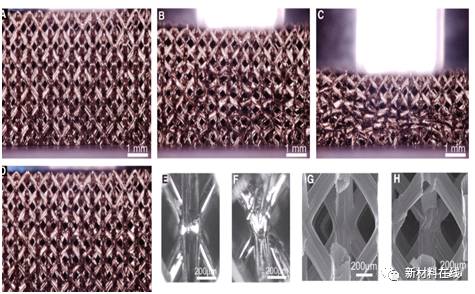
Main research institution (company): Boeing.
Tin
Breakthrough: a two-dimensional crystal composed of a single layer of tin atoms with a thickness of less than 0.4 nm, tin-ene, a super material that can reach 100% conductivity at room temperature. Its conductivity is only present at the edge or surface of the material, not the interior. . When the topological insulator is only one layer thick, its edge conductivity is 100% perfect. Far from the graphene that has been heated in recent years, it can realize electron transport without energy loss at room temperature.
Trends: The application of higher integration of electronic devices is of great significance.
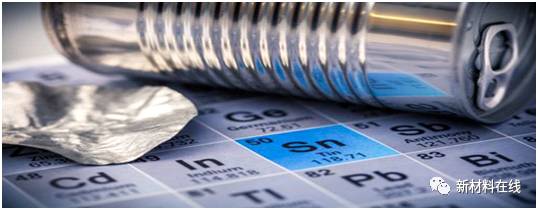
Major research institutions (companies): US Department of Energy SLAC National Acceleration Laboratory, Stanford University, University of Würzburg, Germany, Shanghai Jiaotong University, Tsinghua University.
New transparent conductive material
Breakthrough: Researchers at Penn State University have chosen a material whose interaction between electrons is greater than its kinetic energy. Because of the strong correlation of electrons, electrons can “feel” to each other, making their properties similar to “liquids” rather than There is no "gas" that interacts. This electronic "liquid" is still very conductive, but the reflection in the visible range is greatly reduced, thereby increasing transparency.
Development trend: It is expected to replace traditional transparent conductive materials, indium tin oxide ITO, in optical transparency, electrical conductivity and ease of manufacture, and will be widely used in display fields such as smart phone touch screens and flat panel displays.

The main research institutions (companies): Pennsylvania State University, Wuxi Lihe Photoelectric Technology Co., Ltd., etc.
Third generation semiconductor
Breakthrough: Wide-band semiconductor materials such as silicon carbide, gallium nitride, zinc oxide, and aluminum nitride. It has a wide forbidden band width, high breakdown electric field, high thermal conductivity, high luminous efficiency, high electron saturation rate and high radiation resistance. More suitable for making high temperature high frequency, radiation resistant and high power devices.
Trends: higher integration of electronic devices, optoelectronic devices, power electronics, blue LED, OLED, lighting, new energy vehicles, missiles, satellites, etc.

The main research institutions (companies): Roma, Mitsubishi Electric, Matsushita Electric, Cree, Bandgap, DowDcorning, II-VI, Instrinsic, Japan's Nippon.
4D printing material
Breakthrough: 4D printing is a way to self
The dynamically deformed material directly incorporates the design into the material, and can be automatically folded into the corresponding shape according to the product design without connecting any complicated electromechanical equipment. The key to 4D printing is the memory alloy.
Trends: furniture manufacturing and the ultimate space aerospace and construction sector.
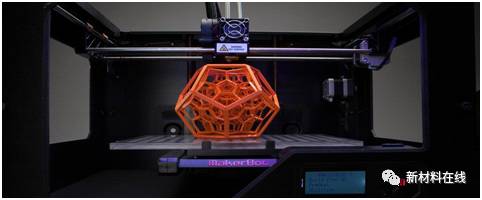
Main research institute (company): Stasi West Co., MIT.
Metal hydrogen
Breakthrough: Metal hydrogen is an electrical conductor that becomes liquid or solid hydrogen at high pressures of millions of atmospheres. Conductivity is similar to metal, so it is called metal hydrogen. Metal hydrogen is a high-density, high-energy storage material. Previous predictions indicate that metal hydrogen is a room temperature superconductor. Metal hydrogen stores huge amounts of energy, 30-40 times larger than ordinary TNT explosives.
Development trend: the most energy-intensive chemical fuel materials (such as: rocket fuel), space-level new concept weapons, power generation energy storage materials, may be room temperature superconductors, new gunpowder, potential fusion application value.

Main research institutions (companies): Harvard University, Edinburgh University.
High entropy alloy
Breakthrough: High-entropy alloys are composed of a variety of similar principal elements. As the number of principal elements increases, the mixing entropy increases, and the mixing produces a unique high entropy effect and inhibits the formation of intermetallic compounds and other ordered phases. The different sizes and bonding forces between the elements lead to the lattice distortion and slow diffusion effect of the alloy, which ensures that the alloy is tough;
Development trend: industrial manufacturing, aerospace, electronics and other fields.

Major research institutions (companies): North Carolina State University, Qatar University, Zhejiang University, Beijing University of Science and Technology.
Boron
Breakthrough: Boronitene is an unusual material because it exhibits many metallic properties at the nanoscale, while three-dimensional boron or bulk boron are only non-metallic semiconductors.
Development trends: aerospace, nano-scale electronic equipment, micro-mechanical equipment and other fields.

The main research institutions (companies): the US Department of Energy Argonne National Laboratory, Northwestern University and the State University of New York at Stony Brook, Brown University, Tsinghua University.
Lithium air battery
Breakthrough: Lithium-oxygen battery or lithium-air battery is 10 times more energy-densible than lithium-ion electrons, and is known as the “ultimate battery” in the industry.
Development trend: aerospace, electronics, power vehicles and other fields.
Main research institutes (companies): Japan Industrial Technology Research Institute, Japan Society for the Promotion of Science (JSPS), Cambridge University, IBM, USA.
Special fiber
Breakthrough: Special fibers have different special properties, such as strong corrosion resistance, low wear, high temperature resistance, radiation resistance, fire resistance, high voltage resistance, high strength and high modulus, high elasticity, reverse osmosis, high efficiency filtration, adsorption, Ion exchange, light guiding, electrical conduction and a variety of medical functions.
Development trends: aerospace, transportation, equipment, sports and leisure, communications, machinery, chemicals, defense and military industries.

The main research institutions (companies): DuPont, Dongli, Teijin, Toyobo, Donghua University, Tianjin University of Technology, Beijing Institute of Chemistry.
Flexible electrode material
Breakthrough: At present, the development direction of all things intelligence, wearable devices will become more and more popular, develop a polymer material with excellent conductivity and stretchability, which can be used for stretchable plastic electrodes. Such a flexible electrode can also be used as a wearable electronic device.
Development trends: touch screens, displays, thin film solar cells.
The main research institutions (companies): Stanford University, Donghua University, Advanced Materials Research Institute of South China Institute of Advanced Optoelectronics, Dalian Institute of Chemical Industry.
Quantum invisible material
Breakthrough: "Quantum invisible" materials are made into clothes, and by reflecting the light waves around the wearer, the person wearing the clothes can achieve the "invisible" effect. "Complete invisibility" by refracting ambient light. "
Development trends: touch screens, displays, thin film solar cells.
The main research institutions (companies): Hyperstealth Biotechnology, University of Science and Technology of China, Tsinghua University.
Holographic film
Breakthrough: It can provide aerial dynamic display, clear visualization, and let the audience see the back scene through the projection film, and can be combined with interactive software to generate three stereo interactive images.
Development trend: It is produced by molecular-level nano-optical components: holographic color filter crystal (HCFC) as the core material, fusion nanotechnology, material light, optics, polymer and other multi-disciplinary results.
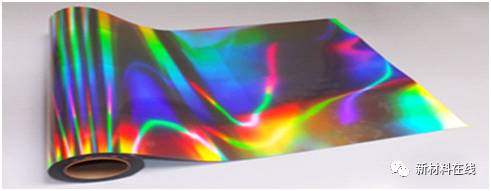
Main research institutions (companies): Excelite, Multiway, Mindiamart, ACF Technology, Shanghai Aodesi Intelligent Technology Co., Ltd. .
Cold boiling material
Breakthrough: Solid, liquid, and gaseous in sequence as temperature decreases. The higher the heat resistance of the cold-boiling material in the aggregate state, the highest temperature tolerance of the cold-boiling metal material can reach 10200 °C, and the electric superconductivity and magnetic superconductivity can be maintained at normal temperature and high temperature; the cold-boiling non-metallic material can withstand 7400 The high temperature of °C is an excellent wear and magnetic resistant material.
Trends: The superior performance of cold-boiled materials can be used to develop a range of previously aerospace engines and aircraft, super-mechanical and electronic equipment, triggering a new round of industrial technology revolution.

The main research institution (company): Beijing University of Aeronautics and Astronautics.
Time crystal
Breakthrough: Different general crystals are repeatedly arranged in space by regular atomic structures. The atomic structure of a time crystal exhibits periodic changes along a time axis under certain conditions, and it maintains an oscillating state in the ground state.
Trends: Time Crystals is a new form of matter that will open up a whole new world for physics research and answer basic questions related to material nature.
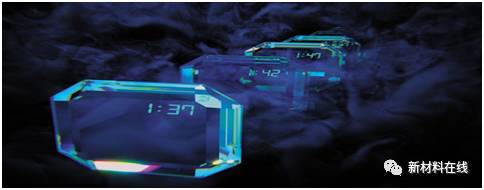
Major research institutions (companies): Harvard University, University of Maryland, Massachusetts Institute of Technology, Cornell University, University of California, Berkeley.
Photonic crystals
Breakthrough: Photonic crystals are regular optical structures made of periodically aligned media of different refractive indices. It has the characteristics of fast speed, zero rest mass, no interaction between each other, and frequency and polarization which are not available in electrons.
Trends: New photonics based on photonic crystals such as mirrors, amplifiers, curved light paths, superprisms, lasers, nonlinear switches, photonic fibers and light-emitting diodes have been proposed.

Major research institutes (companies): Alnair Labs, Yenista, CILAS, Newport, Shanghai Instant Optical Technology Co., Ltd., Beijing Lingyun Photonics Co., Ltd., Jiangsu Falsun Photonics Co., Ltd., Shanghai Institute of Optics and Mechanics, Madrid Polytechnic University.
☞ Source : New Materials Online
Address:Tianan Smart City A1-602, No. 228 Linghu Avenue, Xinwu District, Wuxi, Jiangsu, China TelePhone:0510-85386636 Fax:0510-85384339 E-mail:info@solmontech.com
KeyWord: